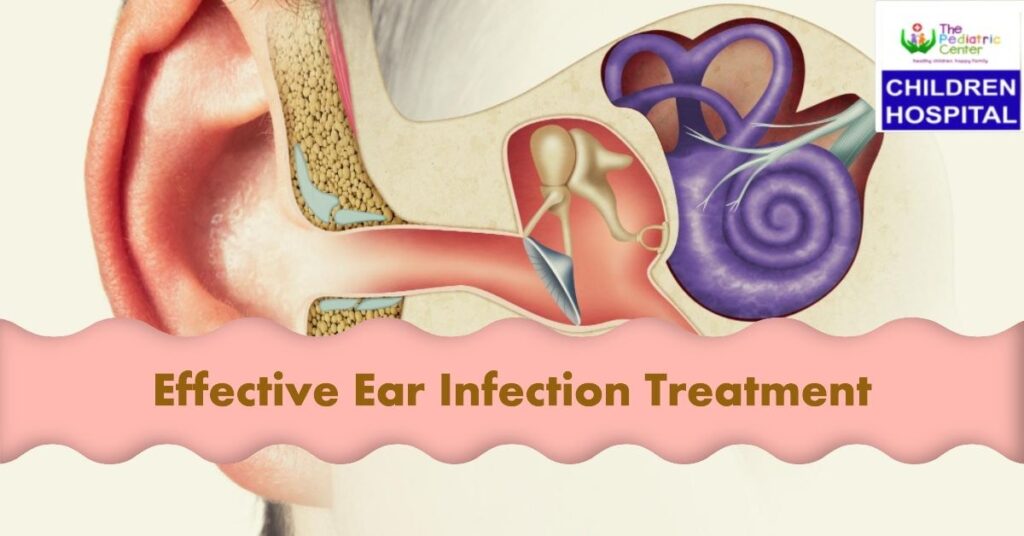
Ear infections are common conditions, typically caused by viruses or bacteria, and are usually categorized based on the part of the ear affected: the middle ear or the outer ear.
Middle Ear Infection (Acute Otitis Media)
Causes:
The primary cause of a middle ear infection is the dysfunction of the Eustachian tubes, the narrow canals that connect the middle ear to the back of the throat. When these tubes become swollen or blocked—often due to a cold, flu, or allergies—they prevent fluid from draining normally. This trapped fluid provides an ideal environment for viruses or bacteria to multiply, leading to an infection, inflammation, and pain. Children are especially prone because their Eustachian tubes are narrower and more horizontal.
Treatments:
- Watchful Waiting and Pain Relief: For most mild middle ear infections, especially in children, doctors often recommend managing the pain with over-the-counter medications like acetaminophen or ibuprofen and simply observing the infection for 1 to 3 days. Many of these infections are viral and resolve on their own.
- Antibiotics: If the infection is severe, the patient is an infant, or the symptoms do not improve after the observation period, a doctor will likely prescribe oral antibiotics.
- Ear Tubes (Myringotomy): For chronic, recurring infections or persistent fluid buildup, a surgical procedure to place small tubes in the eardrum may be recommended to help drain the fluid and ventilate the middle ear.
Outer Ear Infection (Otitis Externa or Swimmer’s Ear)
Causes:
An outer ear infection affects the ear canal, the passage from the outer ear to the eardrum. It is most frequently caused by water exposure, which washes away protective earwax and leaves the ear canal moist, creating a breeding ground for bacteria (or sometimes fungi). Other causes include trauma, such as scratching the ear canal with cotton swabs or other objects.
Treatments:
- Medicated Eardrops: The standard treatment is antibiotic or antifungal eardrops, often combined with a steroid to reduce inflammation and swelling.
- Cleaning: The ear canal may need to be professionally cleaned by a doctor to ensure the eardrops can reach the infected area.
- Avoiding Moisture: Patients must keep the affected ear completely dry during the healing process, which means avoiding swimming and using caution while bathing.
General Recommendations
Regardless of the type of infection, a healthcare provider should be consulted if the pain is severe, a fever is present (especially above 102.2degree F or 39degree C), or if there is any discharge of pus or fluid from the ear. Do not insert cotton swabs or other objects into the ear canal, as this can cause further damage.
PS: Please feel free to share our articles with friends and family.
© 2024 The Pediatric Center Children Hospital
2a Sulaimon Abdullahi Street, Agungi, Lekki, Lagos
Road 2, House 20, Greenland Estate, Olokonla, Ajah-Sangotedo, Lagos
14, Bassie Ogamba Street Off Adeniran Ogunsanya Surulere, Lagos
Unsubscribe
